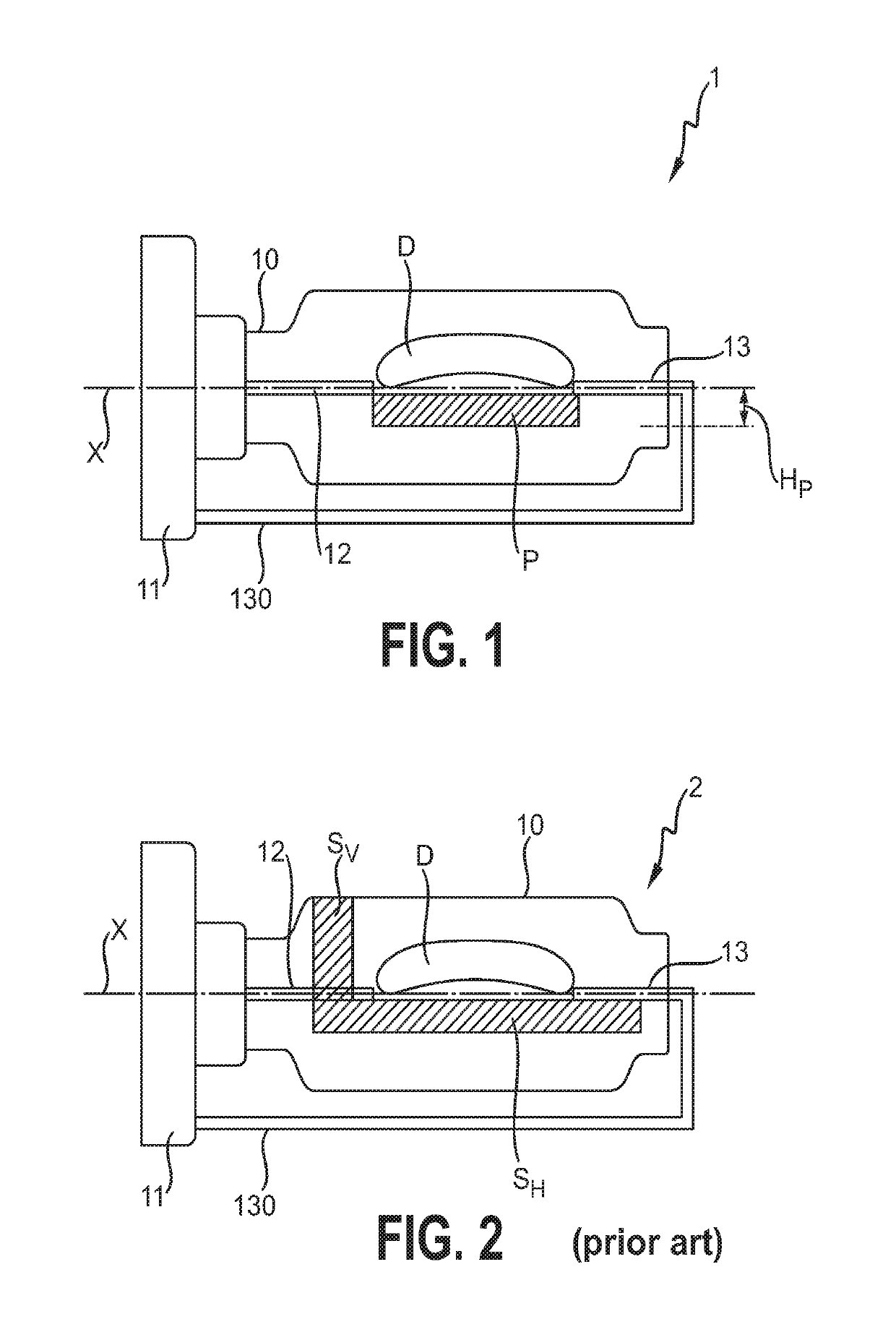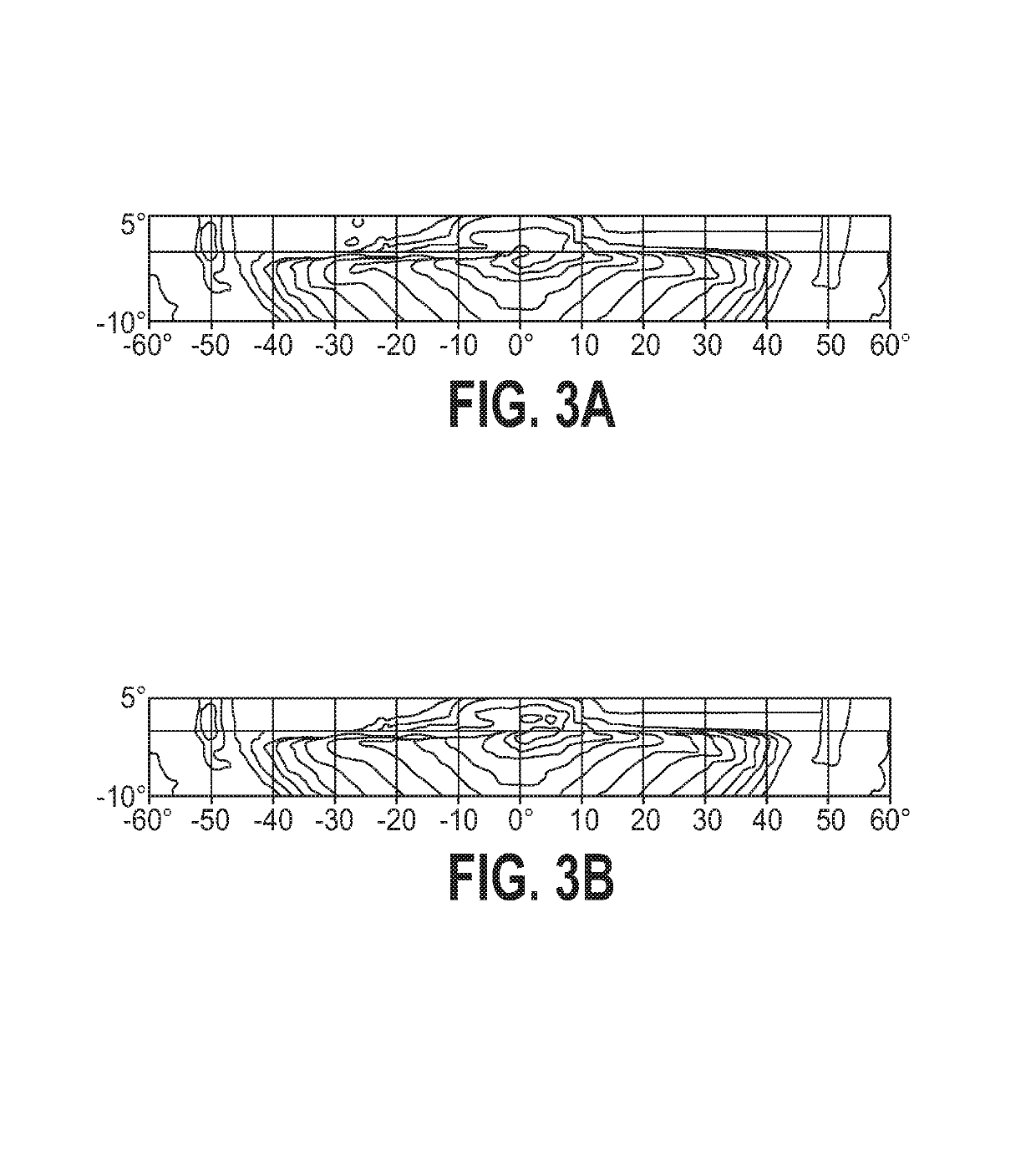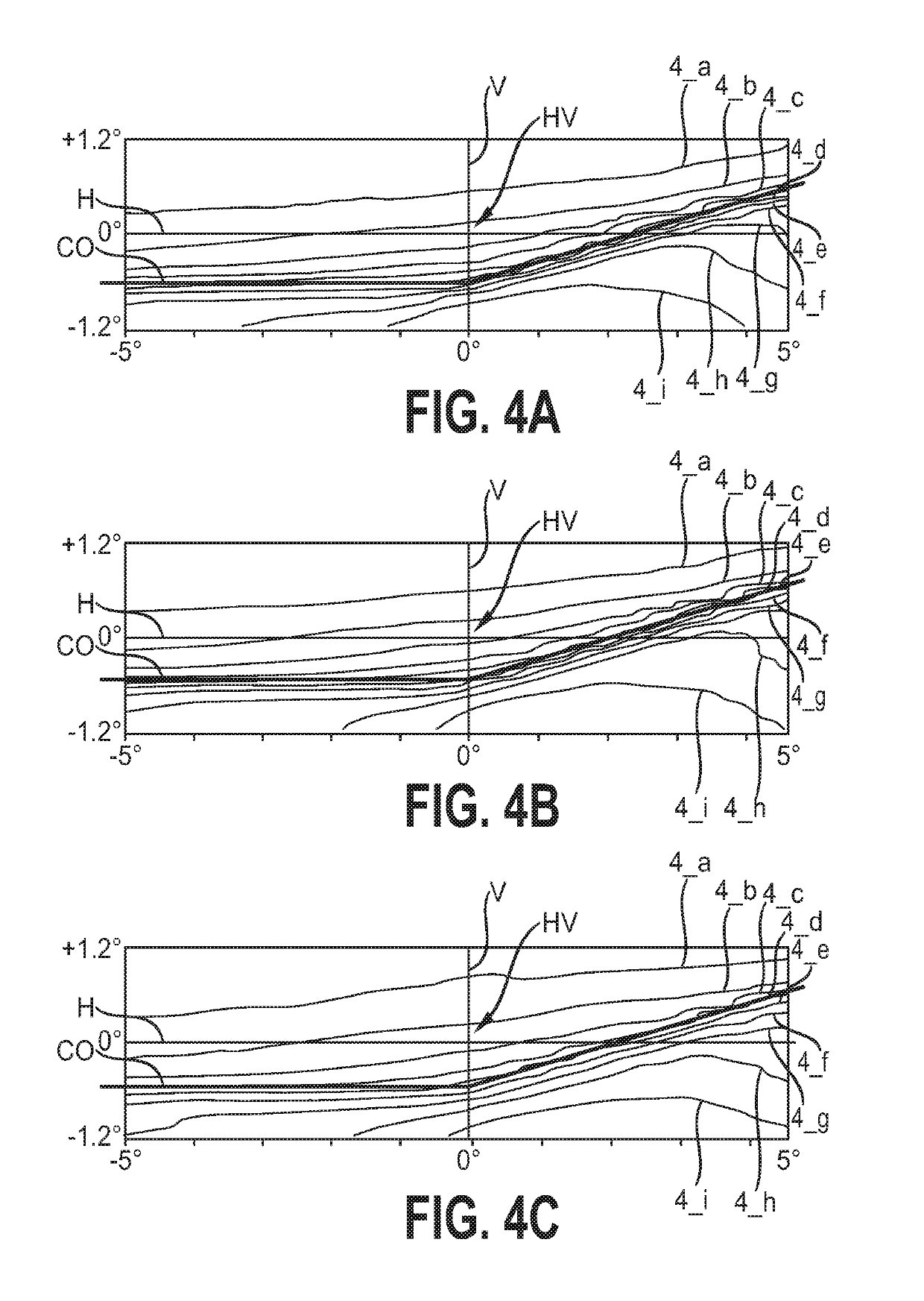Gas-discharge lamp for a vehicle headlamp
a technology for gas-discharge lamps and headlamps, which is applied in the direction of electric discharge lamps, transportation and packaging, lighting and heating apparatus, etc., can solve the problems of reducing the beam length and width by up to 50%, the possibility of using r-type lamps, and glare levels which are not acceptable, so as to facilitate the generation of clear cut-off lines and limit glare
- Summary
- Abstract
- Description
- Claims
- Application Information
AI Technical Summary
Benefits of technology
Problems solved by technology
Method used
Image
Examples
Embodiment Construction
[0035]FIG. 1 shows a HID lamp 1 according to an embodiment of the invention. The lamp 1 comprises an outer vessel 10 or envelope 10 enclosing an inner vessel 100 or burner 100. Two electrodes 12, 13 extend into the burner 100 and their tips face each other across a narrow gap G. A return lead 130 provides an electrical connection between the outer electrode 13 and a base 11 or ballast housing 11 of the lamp 1, so that both electrodes 12, 13 can be electrically connected to a ballast (not shown). The geometrical construction details of this lamp 1 correspond essentially to those of a standard D2R lamp. When the lamp 1 is ignited, a discharge arc D is established between the electrode tips. The discharge arc D will have a curved bow shape extending above a longitudinal axis X extending through the center of the lamp 1. The diagram shows a lateral stripe P applied to an outer surface of the envelope 10. The stripe P is arranged such that it does not extend above the level of the longit...
PUM
 Login to View More
Login to View More Abstract
Description
Claims
Application Information
 Login to View More
Login to View More - R&D
- Intellectual Property
- Life Sciences
- Materials
- Tech Scout
- Unparalleled Data Quality
- Higher Quality Content
- 60% Fewer Hallucinations
Browse by: Latest US Patents, China's latest patents, Technical Efficacy Thesaurus, Application Domain, Technology Topic, Popular Technical Reports.
© 2025 PatSnap. All rights reserved.Legal|Privacy policy|Modern Slavery Act Transparency Statement|Sitemap|About US| Contact US: help@patsnap.com



